Acupuncture for Back Spasms: The painful and uncomfortable phenomenon known as back muscle spasms occurs when the back muscles tighten without conscious effort. Several things, such as overuse, muscle strain, lack of water, and bad posture, can lead to these spasms. Back spasms can result from overstressed or strained muscles. When muscles aren’t getting enough water, they’re more likely to cramp, leading to spasms. When you sit or stand incorrectly, you increase the strain on your back muscles, which can cause pain and even spasms.
An acute, stabbing pain may be felt in the region where a muscle spasm has occurred. Further symptoms include a constricted or knotted muscle sensation and a limited range of motion. Sometimes, back pain from muscle spasms can be so excruciating that the affected area becomes immobile. Treating muscle spasms as soon as they occur is crucial to preventing more problems. Understanding their causes and symptoms is essential to discovering effective treatments for back spasms.
Critical Points to Remember
- Back muscle spasms are involuntary contractions of the back muscles, often caused by overuse, injury, or poor posture.
- Acupuncture works for back spasms by stimulating the body’s natural healing process and promoting blood flow to the affected area.
- The benefits of acupuncture for muscle spasms include pain relief, improved flexibility, and reduced inflammation.
- During an acupuncture session, you can expect to have thin needles inserted into specific points on your body, which may cause a slight tingling or dull ache.
- Other complementary therapies for back spasms include massage therapy, chiropractic care, and physical therapy.
- It’s important to maintain good posture, exercise regularly, and practice stress-reducing techniques to prevent back spasms.
- When finding a qualified acupuncturist, look for someone licensed, experienced, and with a good reputation in the community.
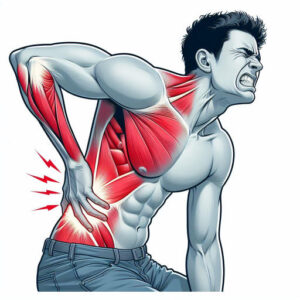 How Acupuncture Works for Back Muscle Spasms
How Acupuncture Works for Back Muscle Spasms
In acupuncture, a kind of traditional Chinese medicine, very thin needles are inserted into certain anatomical spots on the body to influence the flow of energy and hasten the healing process. <a title="Acupuncture Preston" href="https://mcrtherapies.co.uk/" rel="">Acupuncture</a> can be quite beneficial for treating back muscle spasms. Anterior points along the body’s meridians, thought to be channels for energy flow, are where acupuncture needles are put. Focusing on these spots can help release tension and promote relaxation in the back muscles.
Acupuncture is believed to trigger the secretion of endorphins, the body’s painkillers, to alleviate muscle spasms. As a result, you may feel less ache and anguish from your muscle spasms. In addition to reducing inflammation and speeding healing, acupuncture can increase blood flow to the injured area. To relieve muscle tension and spasms, acupuncture works by stimulating particular sites on the body, which helps to restore balance to the body’s energy flow.
The Benefits of Acupuncture for Back Muscle Spasms
Acupuncture is a fantastic option for relieving muscle spasms. One of its main advantages is its capacity to alleviate pain naturally and without using medicine. Because acupuncture triggers the body’s endorphin release, it can relieve pain and ease tension in the back muscles. Many people who experience muscle spasms can get relief from this.
Not only may acupuncture alleviate pain, but it can also increase flexibility and mobility in the back. Focusing on particular spots on the body can help relieve muscle tension and tightness, resulting in improved range of motion and flexibility. People whose mobility has been impaired because of muscle spasms may find this helpful.
Finally, when administered by a trained professional, acupuncture is a safe and non-invasive therapeutic choice. People who want to avoid medication or intrusive treatments for back spasms can benefit from this safe and effective option.
What to Expect During an Acupuncture Session
The acupuncturist will take a detailed medical and symptom history during the first acupuncture session for muscle spasms. This information can then determine the best course of action for relieving the muscle spasms. After that, the patient will be led to a relaxing treatment table where the acupuncturist will put tiny needles into strategic spots on the body.
Extremely thin needles are put just beneath the skin’s surface in acupuncture. Acupuncture is often painless, though some people may feel tingling as the needles are inserted. The needles will be left in place for a time, usually approximately 20-30 minutes, after they are placed. While acupuncture loosens knots in the muscles and restores energy flow, the patient may experience a state of tranquillity and relaxation.
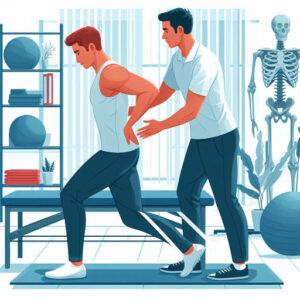 Other Complementary Therapies for Back Muscle Spasms
Other Complementary Therapies for Back Muscle Spasms
If you suffer from back muscle spasms, you may find relief through acupuncture or other complementary therapies. Aligning the spine and releasing tension in the back muscles is the goal of several forms of spinal manipulation, including chiropractic care. Muscle spasms can be relieved by seeing a chiropractor, who uses manual manipulation techniques to realign the spine and promote general spinal health.
Massage is another helpful option for supplementary treatments for muscle spasms. Massage therapists employ a variety of techniques to alleviate stress and anxiety by manipulating the body’s soft tissues and muscles. People whose back muscles are tense and causing spasms may find this highly helpful.
Physical therapy can also benefit people who suffer from back spasms. Physical therapists can design individualised training regimens to help patients regain mobility, flexibility, and strength in their back muscles. Try these exercises to keep your back healthy and avoid recurring muscle spasms.
Tips for Preventing Back Spasms
To avoid back spasms, it’s essential to keep your back healthy and avoid putting unnecessary strain on your muscles. Keeping your body upright can help reduce the likelihood of muscle spasms. Good posture during sitting, standing, and lifting can also reduce strain on the back muscles and avoid tension and spasms.
Another important thing to remember to avoid muscle spasms is to stay hydrated. Regular hydration is essential to prevent muscle cramps and spasms, which can occur when fluids don’t reach the muscles. Furthermore, regular exercise can strengthen back muscles and improve flexibility, reducing the likelihood of muscle spasms.
Similarly, you should not stay in one place for long periods without getting up and moving around occasionally. Preventing muscle stress and spasms is as simple as getting up and moving about every few hours. Lastly, keeping a healthy weight can lessen the load on the back muscles, reducing the likelihood of muscle spasms.
 Finding a Qualified Acupuncturist
Finding a Qualified Acupuncturist
Visiting a licenced practitioner with expertise in musculoskeletal disorders is best to get the most out of acupuncture for back spasms. Asking loved ones or friends who have had good experiences with acupuncture for recommendations is one approach to finding a competent acupuncturist. Furthermore, customers can locate competent acupuncturists in their region using the online directories maintained by numerous professional organisations for acupuncture practitioners.
Also, check with the acupuncturist’s licencing and certification requirements to ensure they are up to code. As a result, you can rest assured that they have the proper education and always do their best work. During their initial consultation, people seeking acupuncture for back muscle spasms may inquire about the practitioner’s background and expertise in this area.
To identify an acupuncturist competent in treating back spasms, one must do homework and ask the right questions. Finding a skilled acupuncturist can provide patients peace of mind about their treatment decisions and improve the likelihood of a good outcome from acupuncture.
Acupuncture may be the answer to your muscle spasms. A recent blog post on the MCR Therapies website claims that acupuncture can effectively treat muscle spasms and enhance general back wellness. Their post is informative if you want to learn more about how acupuncture might help with back pain. Here.
FAQs
What is acupuncture?
In traditional Chinese medicine acupuncture, very thin needles are inserted into certain anatomical spots on the body to influence the flow of energy and hasten the healing process.
How does acupuncture help with back spasms?
People often turn to acupuncture for relief from back spasms. It increases blood flow, releases endorphins, and decreases inflammation. Two additional benefits are relaxing the muscles and making them work better.
Is acupuncture safe for treating back spasms?
Acupuncture is typically considered safe for treating muscle spasms when administered by a qualified and certified practitioner. However, before beginning acupuncture therapy, it is essential to check with a healthcare provider, particularly if you have any preexisting health issues.
How many acupuncture sessions are needed for muscle spasms?
A person’s reaction to treatment and the intensity of their back spasms determine how many acupuncture sessions may be necessary. A few sessions may be all it takes for some people to feel better, while others may need to continue treatment for the long haul.
Are there any side effects of acupuncture for back spasms?
Minor bleeding, bruising, or discomfort at the injection sites is a common adverse reaction to acupuncture. More severe adverse effects, like infection or nerve damage, can happen rarely. Visiting a licenced and competent acupuncturist is essential to reduce the likelihood of adverse effects.
References
- Is Acupuncture Good for Chronic Back Pain? » Balance Within Acupuncture & Chiropractic. https://www.balancewithinyou.com/pain/is-acupuncture-good-for-chronic-back-pain/
- Recovering from Injury: 5 simple tips – Health changing. https://healthchanging.com/238-2/
- Empowering Recovery: The Role of Physiotherapy in Restoring Health and Mobility – Be honest and be healthy!. https://bahasainggrisoke.com/empowering-recovery-the-role-of-physiotherapy-in-restoring-health-and-mobility/

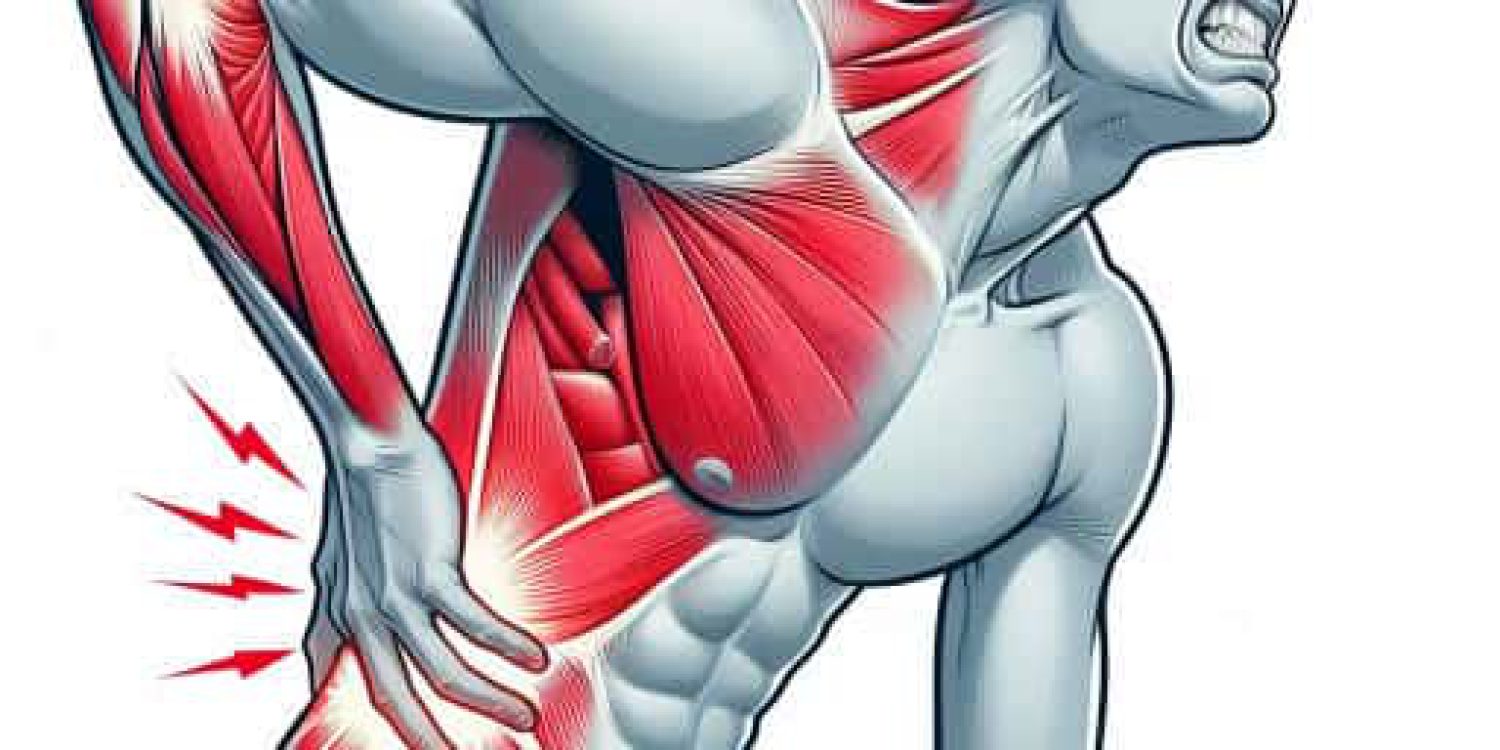



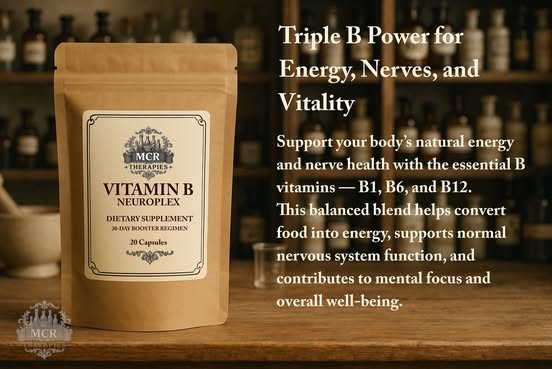
















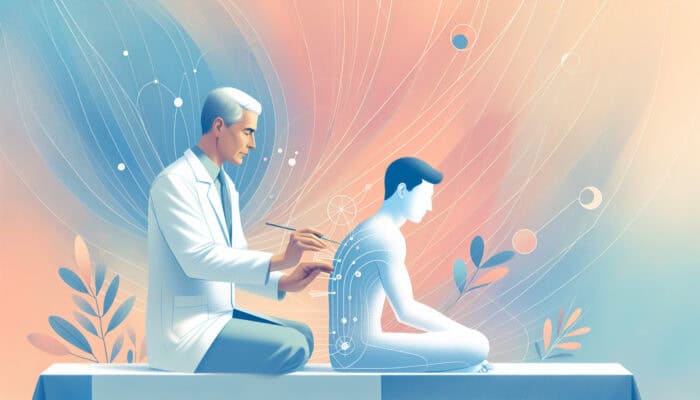



46 Comments
Your exploration of acupuncture as a potential remedy for back spasms resonates deeply with many individuals who have faced the debilitating challenge of muscle tightness and pain. As someone who has experienced chronic back issues, I can attest to the intricate relationship between lifestyle choices and muscle health. Your discussion prompted me to reflect on my personal journey with back spasms and how certain holistic practices have influenced my recovery.
It’s interesting to hear about your personal experiences with chronic back issues and the role that holistic practices have played in your recovery. It’s remarkable how intertwined our lifestyle choices are with our physical health, especially regarding something as complex as back spasms.
“Discover the inconvenient truths behind the façade—click here to unravel the complexities that challenge our assumptions and provoke a deeper understanding.”
https://mcrtherapies.co.uk/yt
It’s true—our lifestyle choices really do weave together with our physical health in ways that often surprise us, especially with something as nuanced as chronic back issues. I’ve found that subtle shifts in routine, like incorporating mindfulness practices or adjusting my workspace ergonomics, can have a profound impact. It’s fascinating how interconnected everything is; stress, core strength, and even diet play roles in how our bodies feel day to day.
I found this insightful piece on how red light therapy can really affect back pain—it’s fascinating how such simple measures can have a profound impact on healing.
‘Back Pain Relief With Red Light Therapy’
https://mcrtherapies.co.uk/back-pain-relief-with-red-light-therapy/.
I completely agree with your observations about how our lifestyle choices intertwine with our physical health, particularly when it comes to something as impactful as chronic back issues. It’s true—so often, we assume that physical pain is isolated from our mental and emotional states, but the connection is undeniably strong. I’ve seen similar benefits from incorporating mindfulness into my daily routine, and it’s striking how even small changes can create a ripple effect.
I really appreciate your take on this. It resonates with me that so many of us overlook the deep connections between our mental, emotional, and physical states, especially when grappling with something like chronic back pain. It feels almost natural to compartmentalize these experiences, but the body often tells a different story.
I found this insightful piece on how red light therapy can offer relief for back pain, and it highlights how our holistic approach to health can truly make a difference.
‘Back Pain Relief With Red Light Therapy’
https://mcrtherapies.co.uk/back-pain-relief-with-red-light-therapy/.
It’s encouraging to hear that you’ve experienced similar benefits from mindfulness. It really opens up a conversation about how interconnected our physical and mental states are. When we focus on cultivating a mindset that prioritizes our well-being, even small tweaks, like taking a moment to breathe or reflect during the day, can lead to significant shifts in how we carry ourselves—physically and emotionally.
“I’m glad to hear you’ve experienced the benefits of mindfulness! If you’re interested in exploring more about how lifestyle choices can enhance overall well-being, check out this resource that dives deeper into the connection between mind and body.”
https://mcrtherapies.co.uk/yt
It’s fascinating how back spasms can turn even the simplest activities into epic quests, isn’t it? One day you’re bending over to pick up a sock, and the next you’re the protagonist in a tragic comedy titled “The Great Muscle Lockdown.”
It really is remarkable how something as seemingly mundane as bending over can spiral into a whole saga. I’ve definitely had my share of those moments, where the simplest movements become a negotiation with my own body. It makes you appreciate how much we take for granted—like the fluidity of movement.
Your experience truly underscores how interconnected our bodies and lifestyles can be. Chronic back issues can feel like an unwelcome companion, always lurking and reminding us of our limitations. It’s impressive that you’ve been able to reflect on your journey and recognize the influence of holistic practices—so many people overlook the power of integrating those alternatives into their recovery.
“Discover the exciting journey that awaits you through this captivating link, where inspiration and new opportunities come together to spark your imagination and ignite your curiosity!”
https://mcrtherapies.co.uk/yt
I can definitely relate to the discomfort of back spasms! It’s fascinating how much hydration and posture play into muscle health. I’ve found that proactive measures like regular stretching and staying well-hydrated can make a huge difference. Plus, there’s something to be said for incorporating mindful practices like yoga or Pilates, which not only help strengthen the back but also promote better overall posture.
It sounds like you’ve found a solid routine that works for you, and that’s great to hear. Back spasms can really throw a wrench into your day, so having those proactive measures in place can be a game changer.
It really has been a journey finding that routine. I used to underestimate how much of an impact back spasms could have on everything from my work to my social life. It’s fascinating how our bodies can dictate so many aspects of our daily experiences, isn’t it?
Finding a routine that works for you can feel like peeling back layers of an onion, right? Every time you think you’ve got it figured out, another layer reveals itself. Your experience with back spasms really resonates with so many of us, showing how much our physical well-being intertwines with everything else going on in our lives.
It really has been a game changer for me. I used to underestimate how much impact back spasms could have on my daily life until I experienced them myself. It really puts everything into perspective. I’ve found that a combination of stretching, strengthening exercises, and mindful movement has made a big difference.
It’s interesting how much we often take our bodies for granted until something like back spasms brings everything to a halt. I can relate to that shift in perspective—it can really redefine how we approach daily activities. Have you found certain stretches or exercises that work better for you? I’ve read a bit about the importance of core strength in preventing those sudden spasms, and it’s fascinating how interconnected our body mechanics are.
I’ve found that exploring different therapies, like magnetotherapy, has really complemented my journey toward managing my back issues and might offer some valuable insights for you too.
‘Magnetotherapy’
https://mcrtherapies.co.uk/product/magnetotherapy/.
It’s so true that our bodies can suddenly remind us they’re in charge, isn’t it? Those back spasms seem to have a knack for dropping in uninvited, like that friend who shows up at the party with a bag of chips but no dip. You start questioning your life choices—like, “Was that one too many episodes of binge-watching, or have I been doing life all wrong?”
It’s interesting how something like back spasms can really shift our perspective on daily life. I had a similar experience when I dealt with chronic neck pain for a while; it definitely made me appreciate the simplicity of just being able to move without discomfort.
You’re spot on about how much our bodies impact our view on life. When you’re in pain, even the simplest things—like getting out of bed or picking up a bag—can feel monumental. That shift in perspective really highlights how we often take our comfort for granted. It’s interesting how challenges like chronic neck pain push us towards a deeper appreciation of movement. Have you found any particular routines or strategies that helped you manage your neck pain? Sometimes sharing tips can really open up new ways to cope or even bring a bit of relief.
“I’m glad to hear you found a new appreciation for simple movement! If you’re looking for tips on managing discomfort and promoting well-being, check out this resource that might help.”
https://mcrtherapies.co.uk/ezi
It’s true how much pain alters our perspective on life. With chronic neck pain, even the smallest tasks can feel like scaling a mountain. That forced slowdown often leads to a greater appreciation for what our bodies do for us every day.
You’ve really hit the nail on the head with your thoughts on pain and perspective. Chronic neck pain can be such a game-changer in the way we see everyday tasks. It’s like a spotlight shining on all the little things we often take for granted—like turning our heads to look at something or even just sitting comfortably.
It’s interesting to hear how your experience has shifted your understanding of back spasms and their impact. Many people don’t realize the profound effects they can have on both physical mobility and mental well-being until they’ve faced them directly. It can be quite an awakening.
I can completely relate to that feeling—back spasms can be quite the disruptive experience. It’s interesting to consider how interconnected our daily habits are with muscle health. I’ve noticed that when I prioritize hydration and focus on my posture throughout the day, there’s definitely a reduced chance of those painful episodes cropping up.
I’ve been exploring some insights on back pain relief and came across a piece on red light therapy that ties into the importance of muscle health, hydration, and mindful practices like yoga—definitely worth a look if you’re dealing with similar issues.
‘Back Pain Relief With Red Light Therapy’
https://mcrtherapies.co.uk/back-pain-relief-with-red-light-therapy/.
Your exploration of back spasms highlights a crucial issue that many people, including myself, can relate to. I’ve experienced the frustrating tightness that accompanies long hours of desk work, and it’s fascinating how something as simple as posture can have such a profound effect on our musculoskeletal health.
It’s interesting how common back spasms have become in our increasingly sedentary lifestyles, isn’t it? I can relate to the feeling of tightness after a long day at the desk. It’s surprising to see how often we overlook basic posture, even though it can significantly impact our overall well-being.
It’s true, the link between our sedentary lifestyles and back spasms is becoming harder to ignore. I’ve definitely felt the tightness creeping in after long hours at my desk, and it makes you realize how easily we can lose sight of our physical well-being amidst the demands of work.
It’s striking how many people experience back spasms these days, isn’t it? Your experience after long hours at the desk is all too common. We’ve trained ourselves to sit for extended periods, often with our bodies contorted in ways that create problems, and we don’t even notice until something gives.
Absolutely, it’s such a common struggle! If you’re looking for practical tips to improve your posture and reduce those pesky back spasms, check out this helpful guide.
https://mcrtherapies.co.uk/yt
I completely get where you’re coming from. I’ve experienced those frustrating tightness episodes too, especially after long stretches of working at my desk. It’s interesting how often we overlook our posture, even though it can affect our entire body.
It’s true that the connection between posture and our physical wellbeing is often overlooked, especially in our current work culture. I’ve found that even small adjustments to my workspace—like elevating my computer screen or using an ergonomic chair—can make a noticeable difference in how I feel after a long day.
You’re spot on about how easy it is to overlook posture, especially with so many people working from home these days. Elevating your computer screen can really change the game; it’s surprising how even minor tweaks can lead to less strain on our neck and back.
Your discussion about back spasms highlights some crucial factors that many people often overlook. The connection between hydration and muscle function is particularly critical; it’s interesting how something as simple as maintaining proper water intake can have a significant impact on muscle health. I’ve often found that when I fall short in my hydration, my body sends me messages through cramps or spasms, and it makes me consider the larger narrative of how our daily habits can impact our physical well-being.
You bring up such a vital point about hydration and its influence on muscle function. It’s fascinating how something so fundamental can often slip under our radar. I’ve definitely experienced those messages from my body in the form of cramps, usually when I’m busy and forget to drink enough water. It’s almost as if our bodies are trying to initiate a conversation, reminding us of the importance of those daily habits.
Your exploration of back spasms truly resonates with me, as I have dealt with this frustrating issue myself. It’s quite fascinating how interconnected our body’s systems can be—the way a lack of hydration can lead to muscle cramps often catches people off-guard. I learned the importance of staying hydrated after facing severe back spasms during a particularly busy work period where I neglected to drink enough water, resulting in what felt like a tight knot in my lower back.
It’s interesting how something as simple as poor posture or dehydration can lead to something so painful as back spasms. I’ve experienced this myself during particularly busy weeks where I’d forget to stay hydrated and sit at my desk for long hours without breaks. It’s a humbling reminder of how crucial self-care is in our daily routines. While acupuncture can be a fantastic relief option, I’ve also found that combining it with gentle stretching and proper hydration makes a significant difference in managing muscle tension. Has anyone else found success with alternative therapies or lifestyle adjustments in tackling back issues? It would be great to share strategies that have worked for us.
It’s so true how something as overlooked as posture or hydration can have such a substantial impact. I remember a week similar to what you’ve described, where I was glued to my screen for hours, and I ended up with some pretty intense back spasms. It’s a good reminder that we often take our physical well-being for granted until we feel those effects.
I can definitely relate to that experience. It’s surprising how easy it is to get lost in screens, isn’t it? I remember a time when I was working on a project and ended up sitting for hours on end without really thinking about my posture or taking breaks. It felt like my whole body revolted after that—tight shoulders, neck pain, and even headaches.
I can relate to that experience too; it’s pretty wild how absorbed we can get in our screens. Time just flies by when you’re tackling a project, doesn’t it? I used to think I could power through long stretches of work without taking breaks, but eventually, my body started sending me clear signals that I needed to pay attention. Tight shoulders and neck pain are definitely familiar companions of the modern work-from-home life.
This post resonates deeply with me, as I’ve experienced the frustrating reality of back spasms on several occasions, often at the most inconvenient times. It’s alarming how something as seemingly straightforward as poor posture or dehydration can spiral into such intense discomfort. I remember one particularly egregious episode during a long workday at my desk; I’d become so engrossed in my tasks that I neglected to hydrate and ended up with a painful reminder of my body’s needs. It really emphasized how interconnected our daily habits and physical health truly are.
You’ve hit the nail on the head! Back spasms really know how to make an entrance, don’t they? It’s like they have a sixth sense for when we’re least prepared—right in the middle of a deadline or when we’re trying to impress the boss during a meeting. And poor posture? Let’s just say it’s the silent partner in this whole ordeal. The way we hunch over our keyboards can turn any workday into a spine-tingling horror show.
You’re spot on about the timing of those back spasms. It’s like they have a knack for choosing the most inconvenient moments possible. I had one during a presentation last month, and it was such a challenge to stay composed while my lower back felt like it was staging a revolt.
Your insight into the causes and symptoms of back spasms resonates with many who may not realize the everyday factors contributing to their discomfort. I’ve personally experienced the frustrating cycle of poor posture leading to these painful spasms after long hours of sitting at my desk. Since implementing regular breaks and exercises, I’ve noticed a significant reduction in frequency and intensity.
It’s great to hear that you’ve found some relief by incorporating breaks and exercises into your routine. Poor posture really can be insidious, especially when we’re glued to our screens for long stretches. It’s interesting how something as simple as remembering to stand up and stretch can have such a profound effect on our physical well-being.
It’s true that poor posture can sneak up on us. Many of us find ourselves so focused on our tasks that we forget our bodies are also in need of attention. Those small breaks for stretching or just standing up make a difference not only in how we feel physically but also in our mental clarity.
Absolutely! If you’re looking for more tips on maintaining a healthy posture and enhancing your well-being, check out this resource that dives deeper into effective strategies.
https://mcrtherapies.co.uk/ig
You’re spot on about how sneaky bad posture can be; it really creeps up on you when you’re focused on the screen. I’ve noticed that those little reminders to stand up and stretch don’t just help with physical discomfort—they also clear your mind a bit. It’s almost like hitting a reset button.
It’s so true—once you start paying attention to your posture and incorporate those breaks, the difference can be noticeable pretty quickly. I remember when I first started taking those little moments to stand up and stretch; it was almost like a fog lifted. My back felt a little lighter, and I noticed I was more energized.
It’s refreshing to hear how paying attention to posture and taking those much-needed breaks has had such a positive impact on your well-being. The feeling of a fog lifting is a powerful metaphor for what can happen when we allow ourselves those brief moments to reconnect with our bodies.
It sounds like you’ve made some serious strides in your battle against the dreaded desk-dwelling villain known as back spasms. Who would’ve thought that giving your back a little extra love through regular breaks and exercises would turn it from a grumpy old man into a somewhat agreeable roommate?